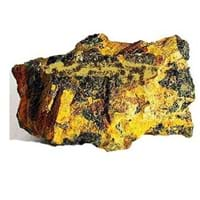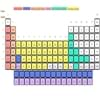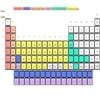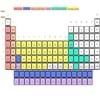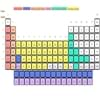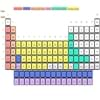Neptunium vs Polonium
Periodic Table
Symbol
Np
Po
Group Number
Not Available
16
2
Period Number
7
6
Block
f block
p block
Element Family
Actinide
Post-Transition
CAS Number
7439998
99+
7440086
99+
Space Group Name
Pnma
Pm-3m
Space Group Number
62.00
11
221.00
3
Facts
Interesting Facts
Not Available
- Polonium was the first radioactive element to be discovered.
- Polonium element and its compounds are highly radioactive.
- Its alloy with Beryllium provides source of neutrons.
Sources
Made by Bombarding Uranium with Neutrons, Ores of metals
Mining, Ores of metals
History
Who Discovered
Edwin McMillan and Philip H. Abelson
Pierre Curie and Marie Curie
Discovery
In 1940
In 1898
Abundance
Abundance In Oceans
Not Available
0.00 %
99+
Uses
Uses & Benefits
- Currently known uses of Neptunium metal are limited to research purpose only.
- Neptunium’s isotope neptunium-237 is used as a neutron detectors.
- Polonium metal has different Allotropes, it is used in antistatic devices and for research purpose.
- A 1 gram of Polonium can reach a temperature of 500°C, hence it is used as a heat source for space equipment.
Industrial Uses
NA
Aerospace Industry, Ammunition Industry
Medical Uses
NA
NA
Other Uses
Alloys, Nuclear Research, Research Purposes
Alloys
Biological Properties
Toxicity
Toxic
Highly Toxic
Present in Human Body
No
No
In Blood
0.00 Blood/mg dm-3
37
0.00 Blood/mg dm-3
37
In Bone
0.00 p.p.m.
36
0.00 p.p.m.
36
Physical Properties
Melting Point
640.00 °C
99+
254.00 °C
99+
Boiling Point
3,902.00 °C
13
962.00 °C
99+
Appearance
Physical State
Solid
Solid
Color
Silver
Silver
Luster
Metallic
NA
Hardness
Speed of Sound
Not Available
Not Available
Optical Properties
Allotropes
No
Yes
α Allotropes
Not Available
α-polonium
β Allotropes
Not Available
β-polonium
γ Allotropes
Not Available
Not Available
Chemical Properties
Chemical Formula
Np
Po
Isotopes
Known Isotopes
20
19
29
10
Electronegativity
Pauling Electronegativity
1.36
29
2.00
7
Allred Rochow Electronegativity
1.22
26
1.76
2
Mulliken-Jaffe Electronegativity
Not Available
2.48
1
Allen Electronegativity
Not Available
2.19
2
Electropositivity
Pauling Electropositivity
2.64
25
2.00
99+
Ionization Energies
1st Energy Level
604.50 kJ/mol
99+
812.10 kJ/mol
14
2nd Energy Level
1,128.00 kJ/mol
99+
Not Available
3rd Energy Level
1,997.00 kJ/mol
99+
Not Available
4th Energy Level
3,242.00 kJ/mol
99+
Not Available
Electrochemical Equivalent
1.77 g/amp-hr
39
3.90 g/amp-hr
8
Electron Work Function
Not Available
Not Available
Other Chemical Properties
Ionization, Radioactive Isotopes, Radioactivity, Solubility
Ionization, Radioactive Isotopes, Solubility
Atomic Properties
Atomic Number
93
25
84
32
Electron Configuration
[Rn] 5f4 6d1 7s2
[Xe] 4f14 5d10 6s2 6p4
Crystal Structure
Orthorhombic (ORTH)
Monoclinic (MON)
Crystal Lattice
ORTH-Crystal-Structure-of-Neptunium.jpg#100
MON-Crystal-Structure-of-Polonium.jpg#100
Atom
Number of Protons
93
25
84
32
Number of Neutrons
144
14
125
19
Number of Electrons
93
25
84
32
Radius of an Atom
Atomic Radius
155.00 pm
30
168.00 pm
23
Covalent Radius
190.00 pm
18
140.00 pm
99+
Van der Waals Radius
221.00 pm
22
197.00 pm
29
Atomic Weight
237.00 amu
22
209.00 amu
28
Atomic Volume
11.62 cm3/mol
99+
22.23 cm3/mol
13
Adjacent Atomic Numbers
Valence Electron Potential
96.00 (-eV)
9
Not Available
Lattice Constant
666.30 pm
3
335.90 pm
99+
Lattice Angles
π/2, π/2, π/2
π/2, π/2, π/2
Lattice C/A Ratio
Not Available
Not Available
Mechanical Properties
Density
Density At Room Temperature
19.38 g/cm3
14
9.20 g/cm3
99+
Density When Liquid (at m.p.)
Not Available
9.40 g/cm3
19
Tensile Strength
125.00 MPa
14
Not Available
Viscosity
Not Available
Not Available
Vapor Pressure
Vapor Pressure at 2000 K
0.11 (Pa)
17
Not Available
Elasticity properties
Poisson Ratio
Not Available
Not Available
Other Mechanical Properties
Ductile
NA
Magnetic Properties
Magnetic Characteristics
Specific Gravity
20.25
6
9.32
31
Magnetic Ordering
Paramagnetic
Nonmagnetic
Electrical Properties
Electrical Property
Conductor
Conductor
Resistivity
1.22 nΩ·m
99+
0.40 nΩ·m
99+
Electrical Conductivity
0.01 106/cm Ω
99+
0.02 106/cm Ω
99+
Electron Affinity
Not Available
183.30 kJ/mol
3
Thermal Properties
Specific Heat
0.12 J/(kg K)
40
0.12 J/(kg K)
40
Molar Heat Capacity
29.46 J/mol·K
8
26.40 J/mol·K
28
Thermal Conductivity
6.30 W/m·K
99+
20.00 W/m·K
99+
Critical Temperature
Not Available
Not Available
Thermal Expansion
Not Available
23.50 µm/(m·K)
16
Enthalpy
Enthalpy of Vaporization
Not Available
60.30 kJ/mol
99+
Enthalpy of Fusion
3.20 kJ/mol
99+
13.00 kJ/mol
26
Enthalpy of Atomization
Not Available
134.00 kJ/mol
99+
Standard Molar Entropy
Not Available
Not Available
|
||
|
||
|

